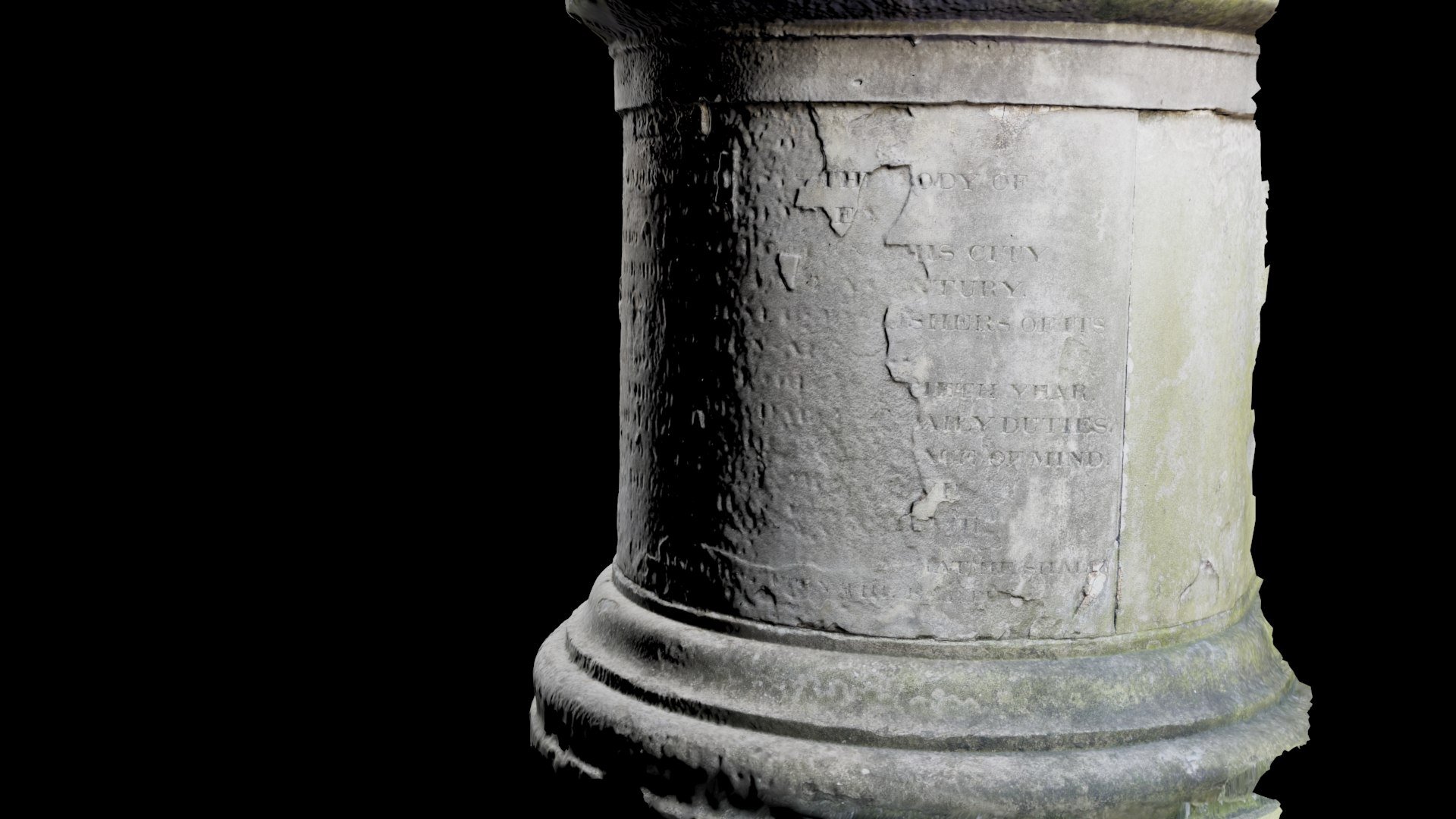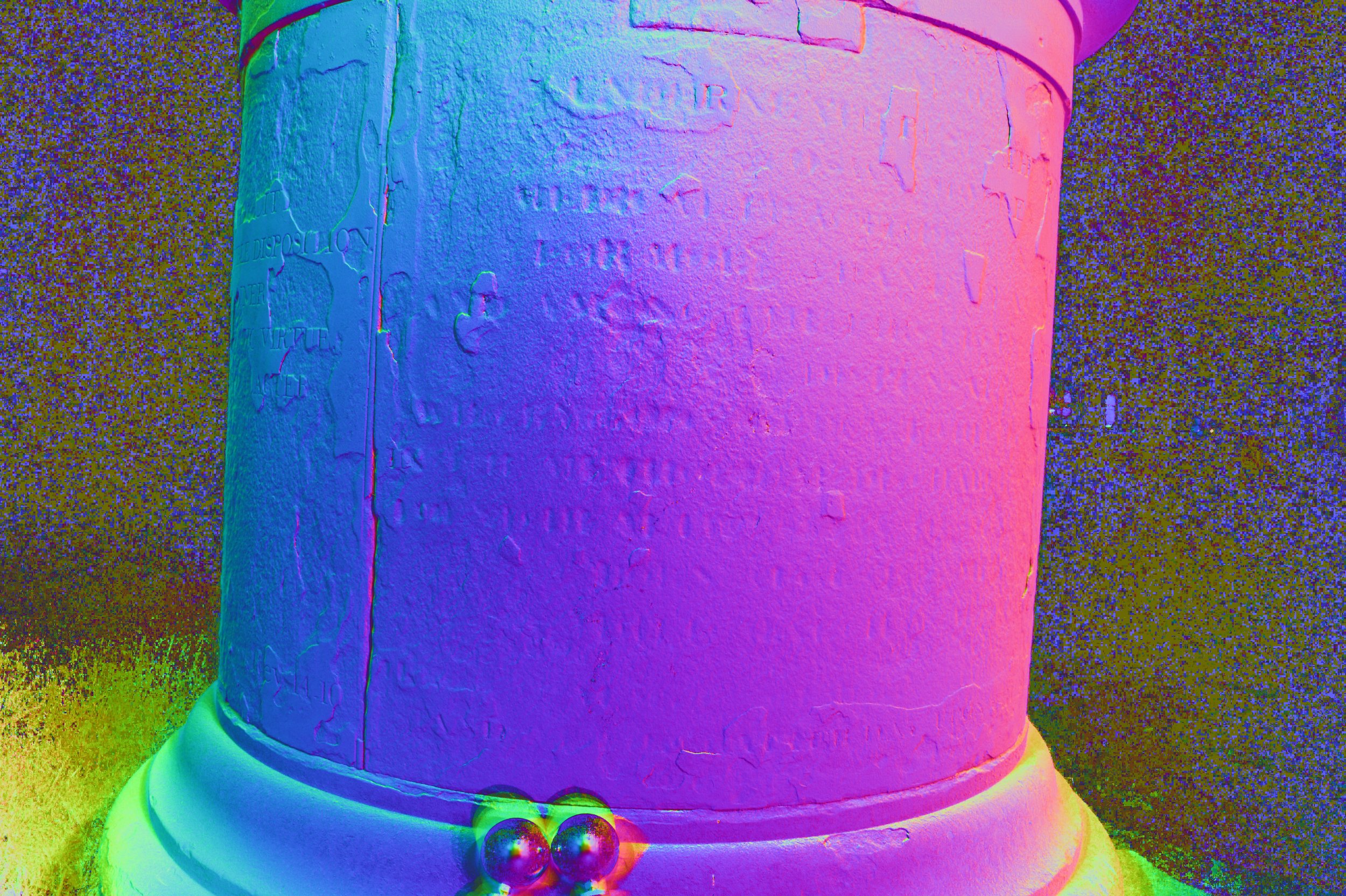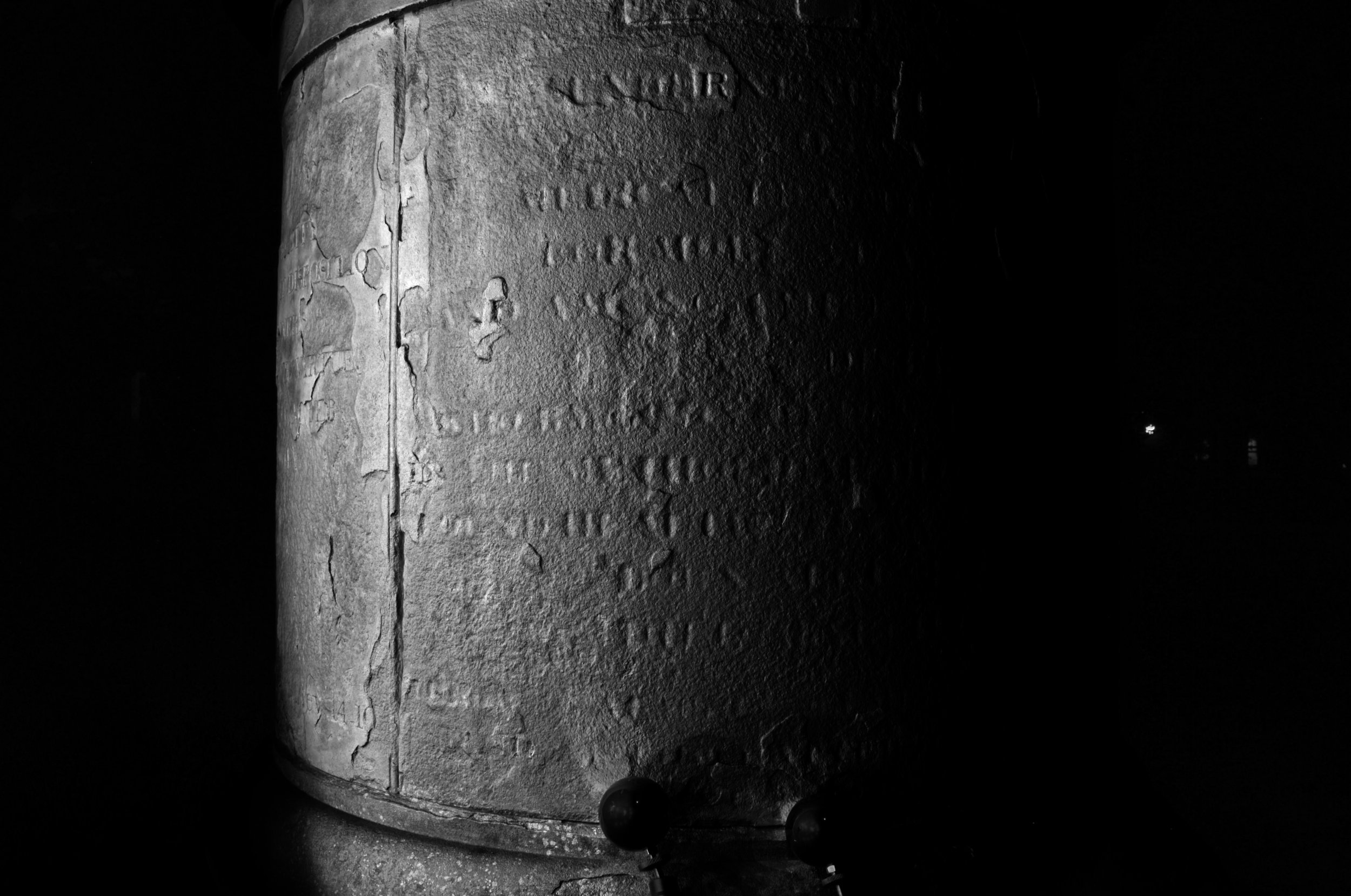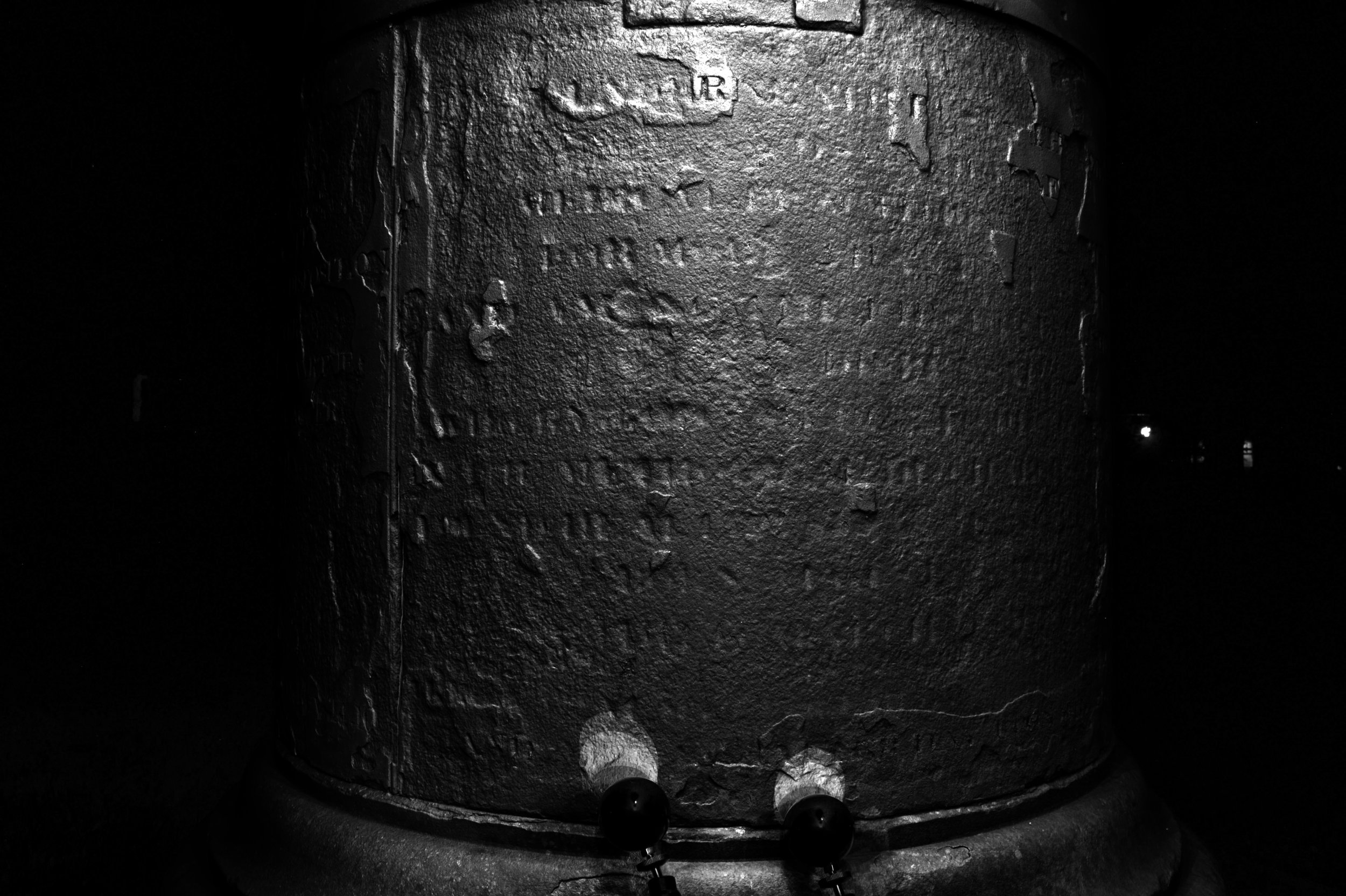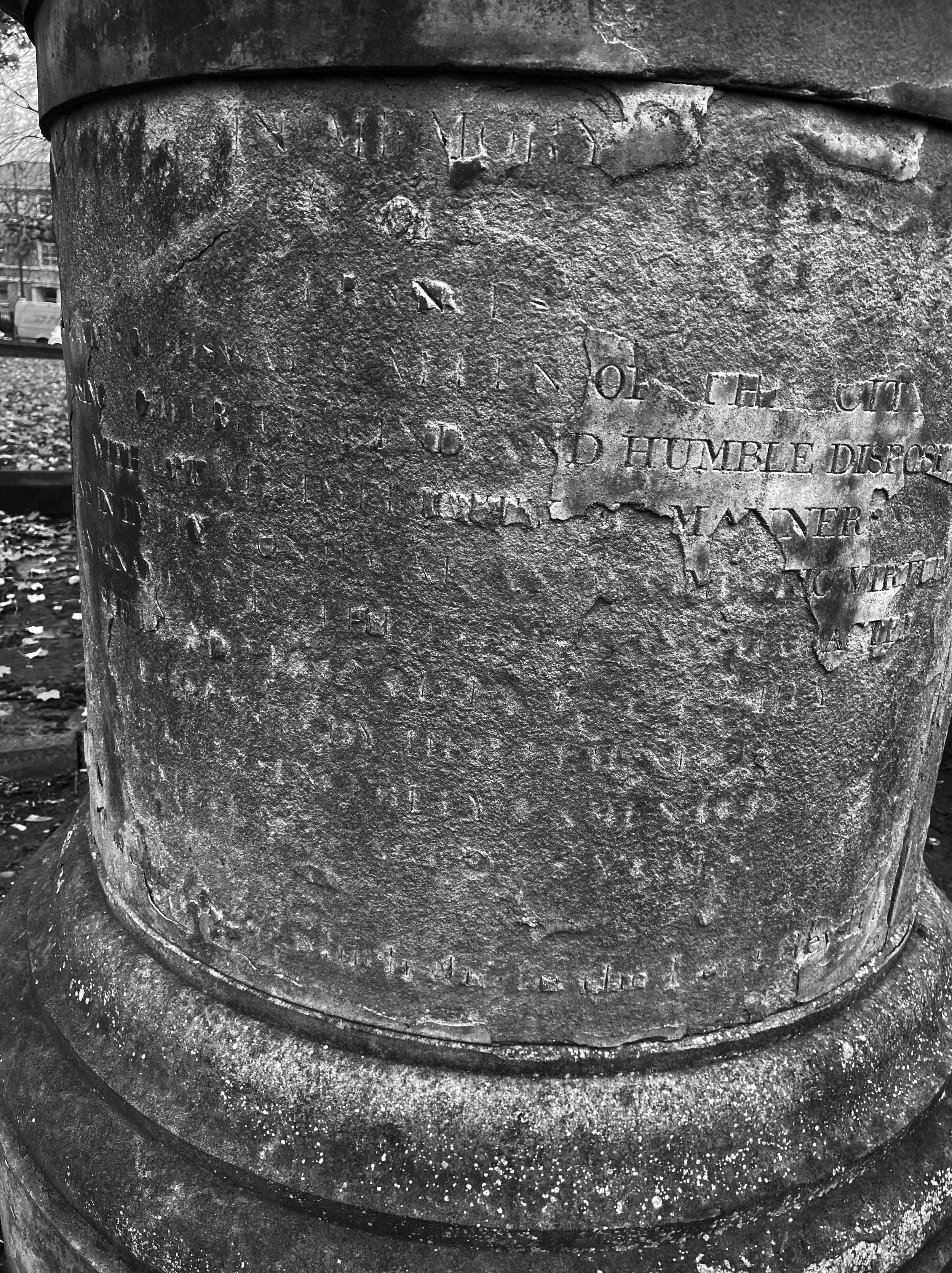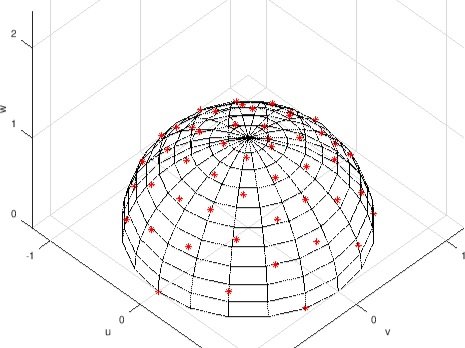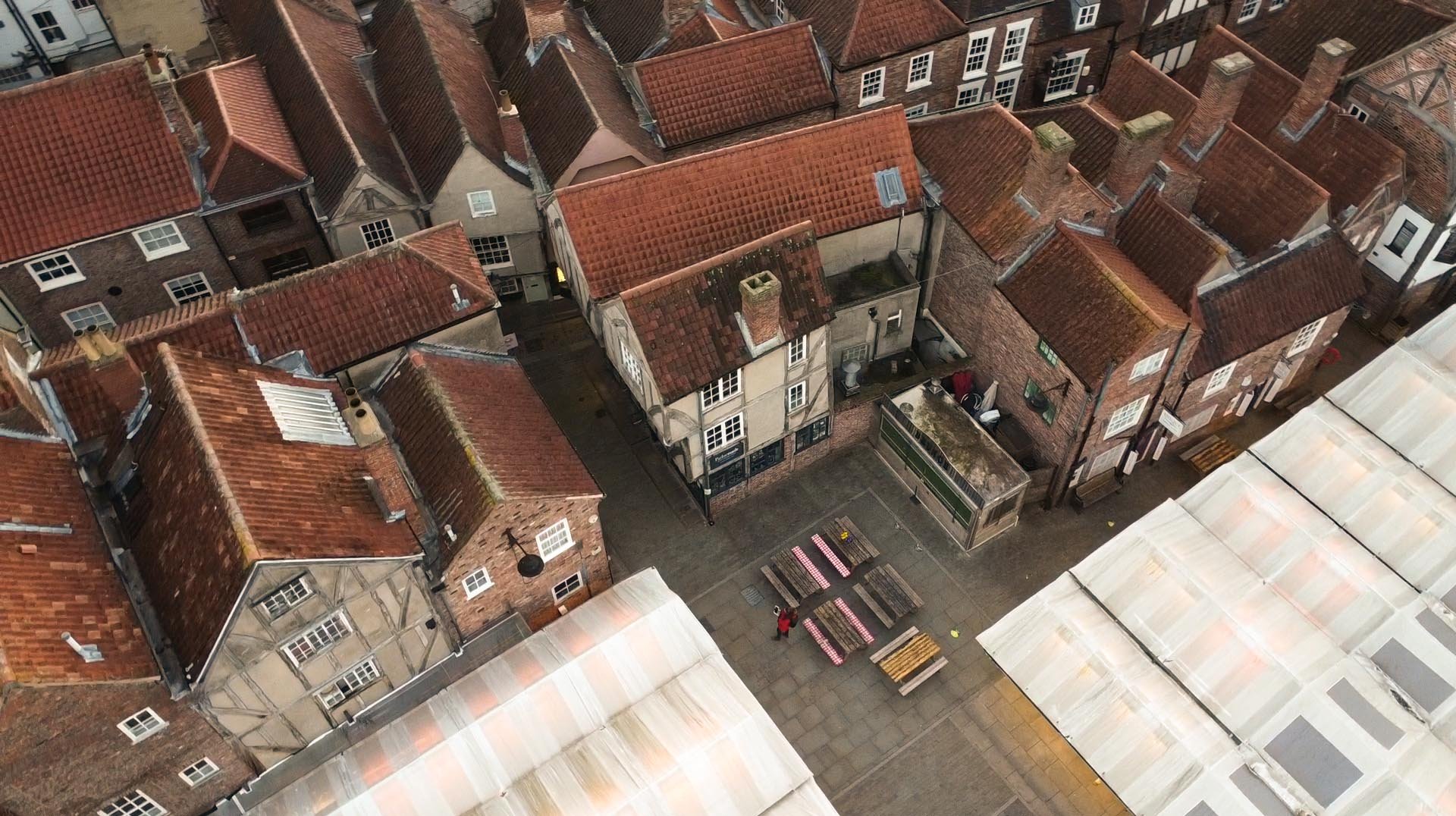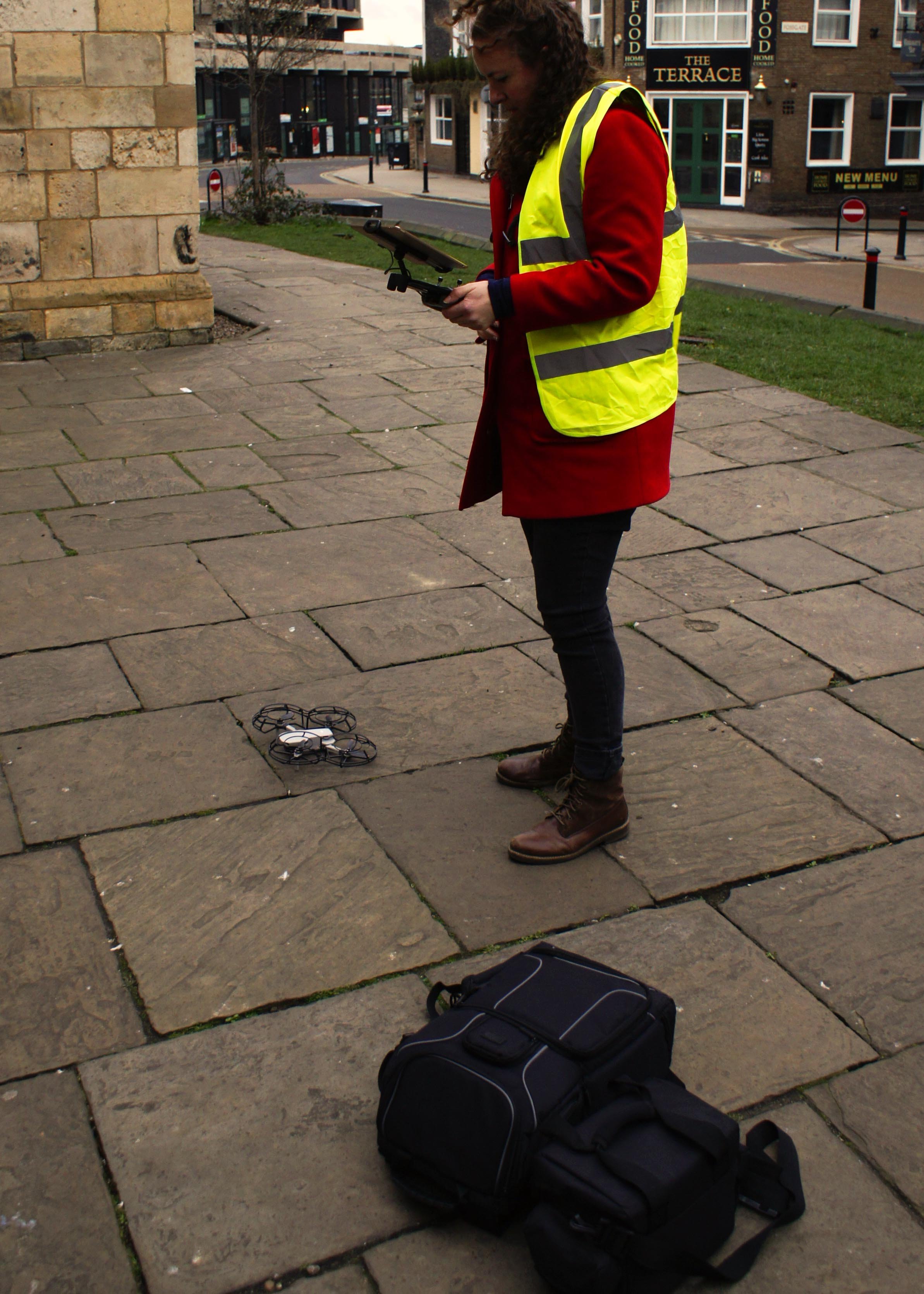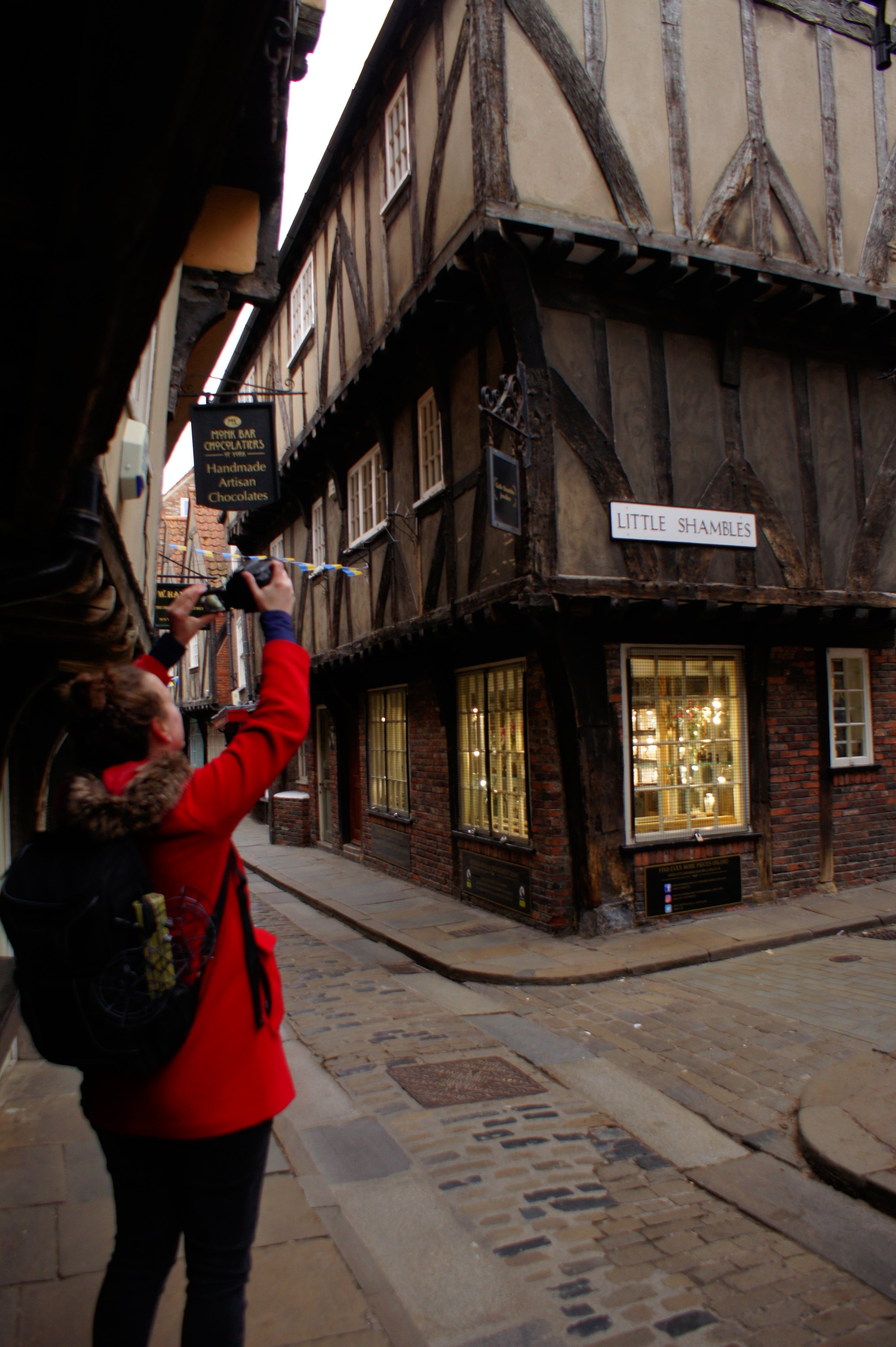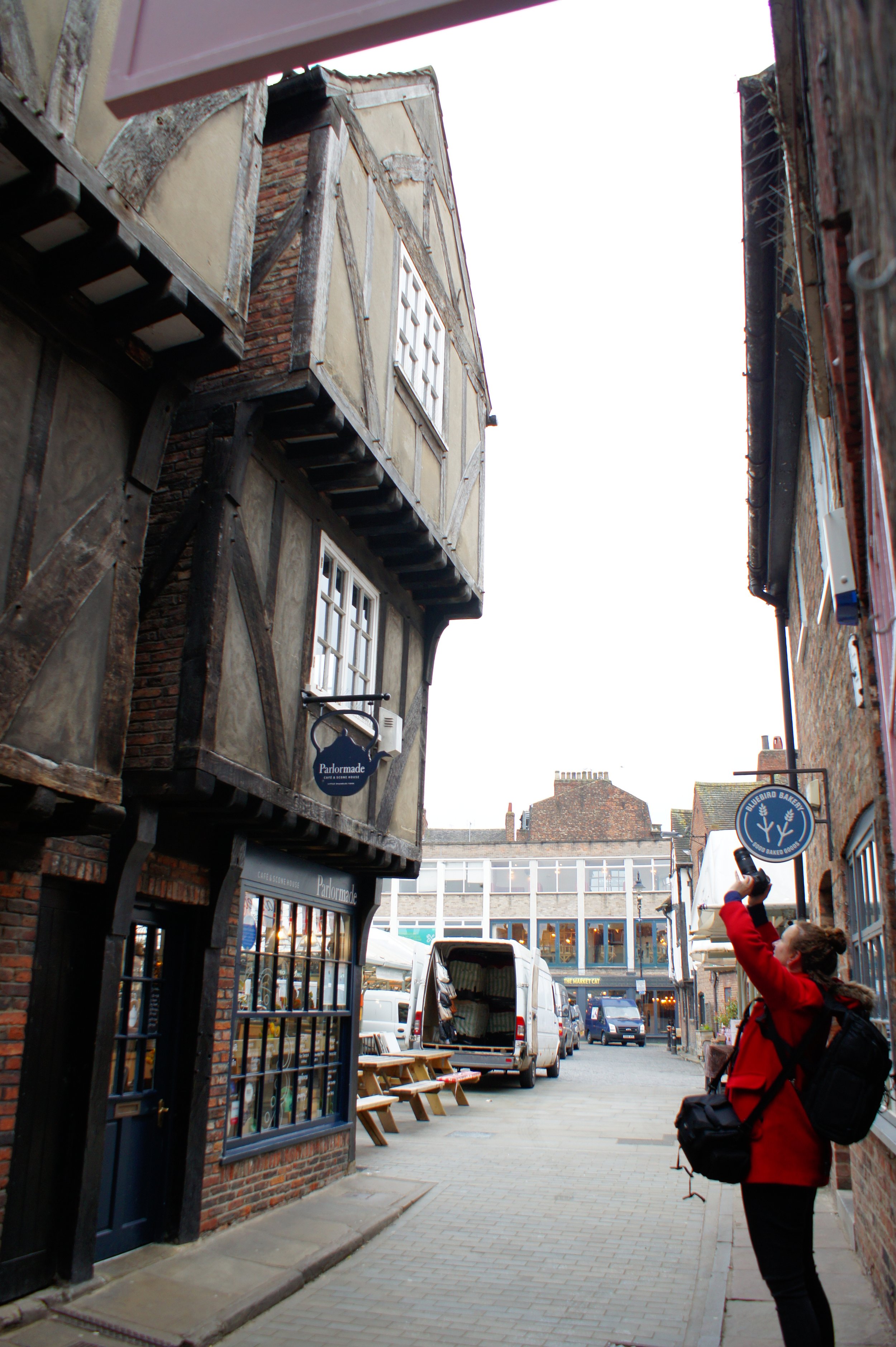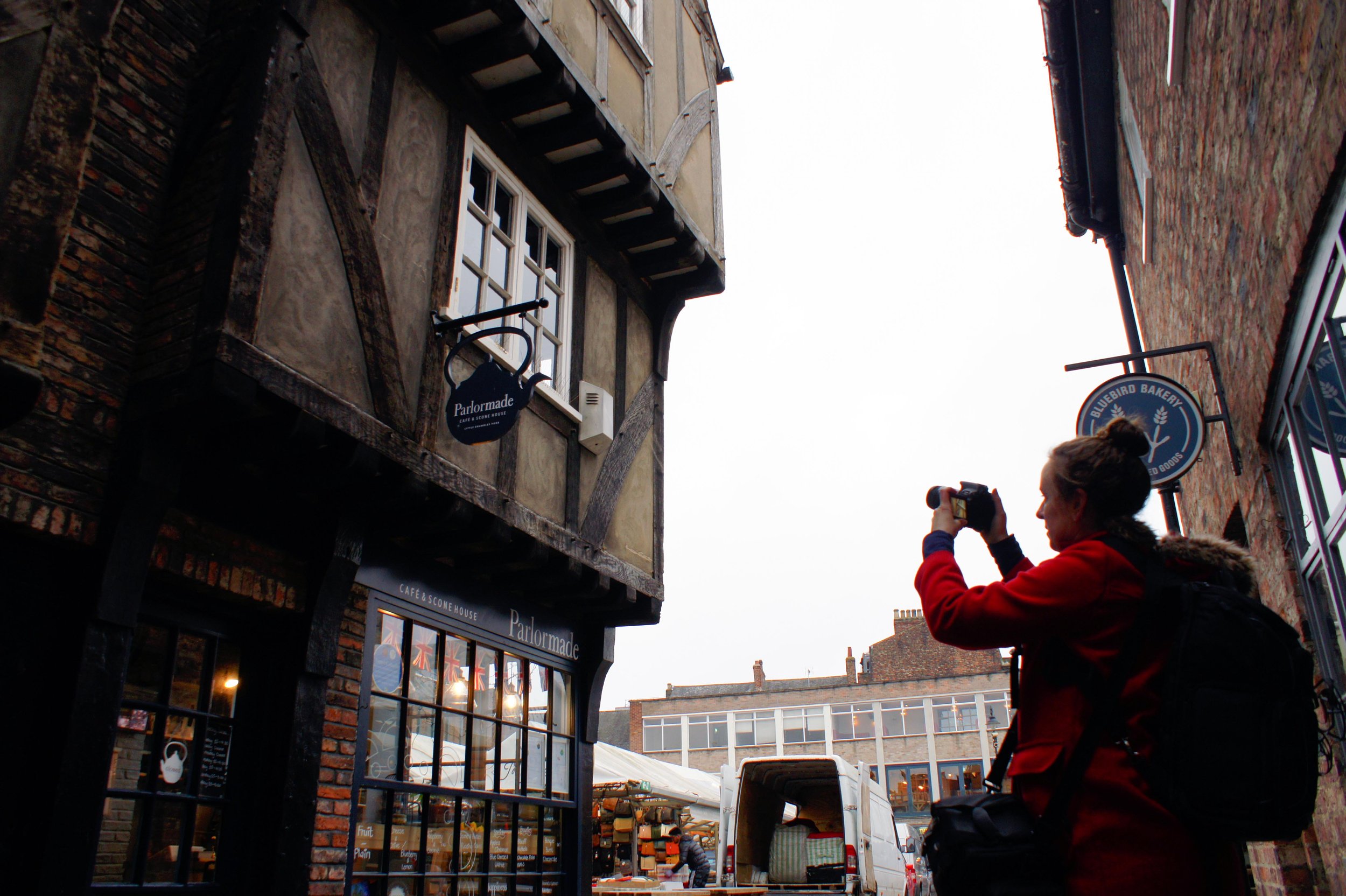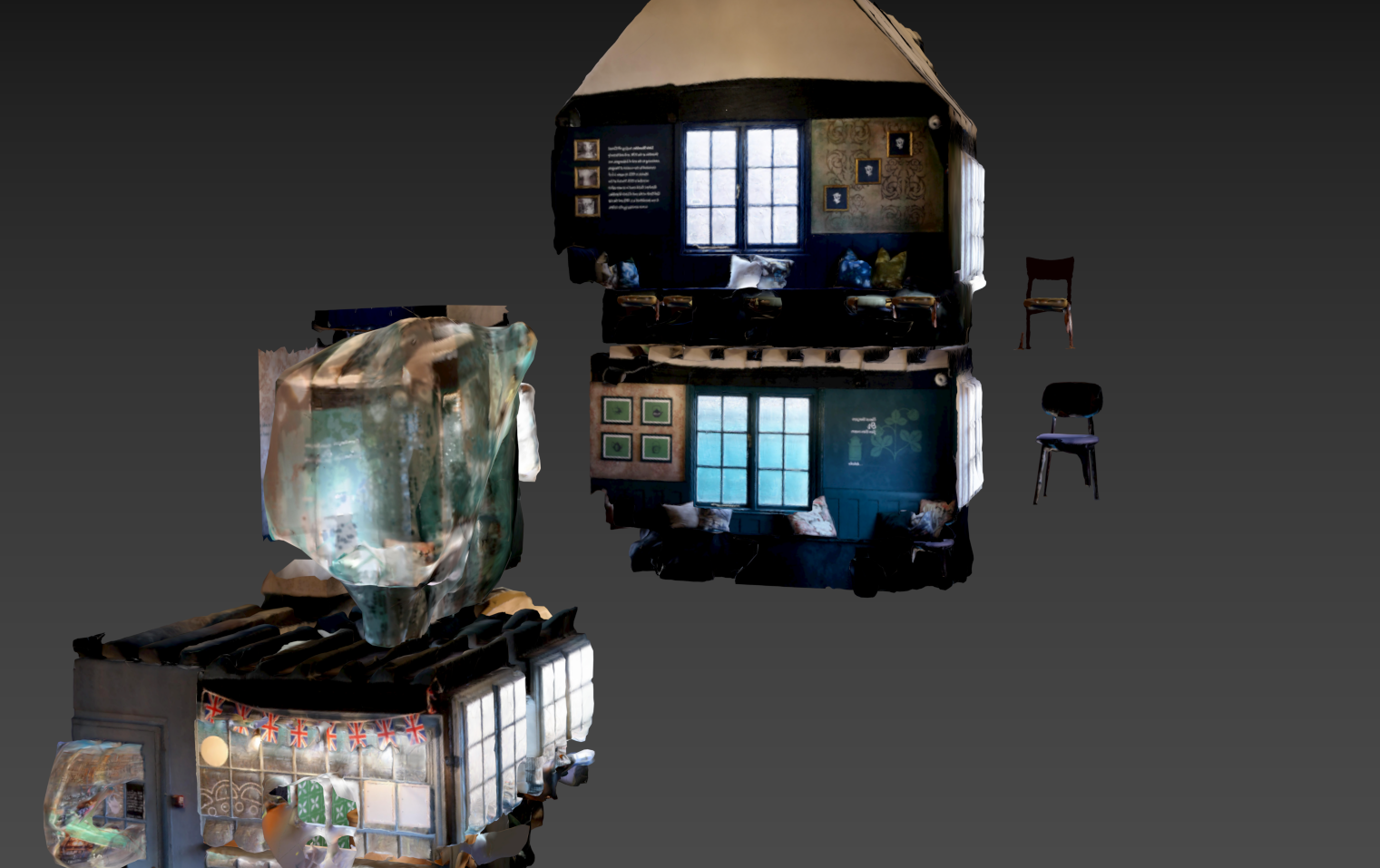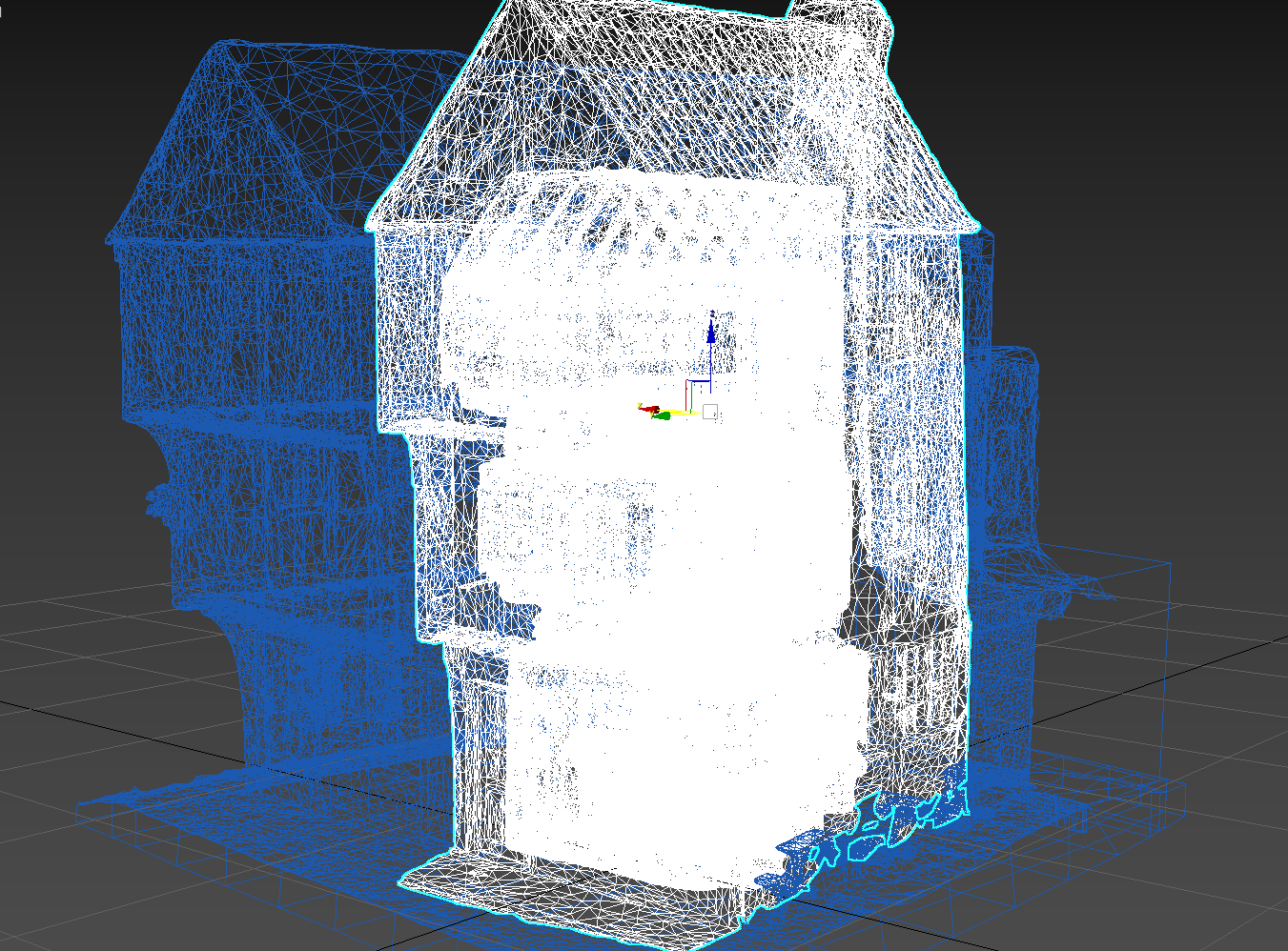Deciphering the worn inscription on the Oswald Allen memorial was an interesting challenge in heritage investigation. This Victorian ‘medicine pot’ memorial was believed to pay tribute to Oswald Allen, founder of the York Dispensary, and his wife Frances. However, despite a Victorian record of the stones within the St Lawrence churchyard, no record of Allen’s memorial inscription can be found and therefore its message is at risk to be lost to history forever. This is why a parishioner of St Lawrence Church approached us to see if digital technologies might be able to decipher anything beyond what is visible to the naked eye.
Determined to at least partially decipher the inscription, we tried several different methods. First a photogrammetry test was done to see if this technique would pick up the required level of detail from the stone’s surface to allow us to see fine depth information. The test didn’t prove promising unless new techniques were engaged including high resolution, macro photography or photometric stereo. Instead, our second method was to try laser scanning and to see if the level of detail was enough to determine small changes in depth.
We were provided assistance with the laser scanning from XR Stories and from SIGN’s Creativity Lab, both very useful resources available to small business in the screen and interactive media realm in the Yorkshire region. With the stone scanned, we first had to flatten it in order to be able to use depth information to help us potentially interpret some of the inscription. To do this, we used software called CloudCompare. Once flattened, we were able to add a colouring system which changes colours based on height information. This helped us to see a little more, but the first scans did not obtain enough fine detail to allow us to see much.
Next, we took on a new technique (for us) called Reflectance Transformation Imaging (RTI). Different to photogrammetry, where the camera is moved around an object, in RTI it is the flash that is moved while the camera remains in the same place. After a series of images are taken having moved the flash in a configuration as shown in the diagram below, processing software pulls these images together to give you further depth information in the form of a normal map. A normal map shows height information for a 3D model and can be used to provide texture to a flat model surface. The RTI viewer software also allows you to digitally move a light source around the object to help highlight depth information through shadows.
A normal map produced through RTI
Placement of light/flash during RTI.
Image credit: https://cceh.github.io/rti/intro.html
We then combined the two techniques by performing RTI on the laser scanned model within the 3D modeling software.
Using these techniques, as well as good old-fashioned raking light (manually using light over the surface of the object to induce shadows which help read inscriptions) and research, we were able to provide more of the inscription than was previously known.
In the end, however, much of the middle of the two panels was indecipherable. The weathering had taken most of the detail of the letters away leaving only a hint that a letter was once there.
Depth colouring
Laser scan, flattened and shaded
Deciphered sections from the inscription

